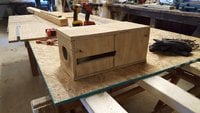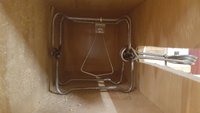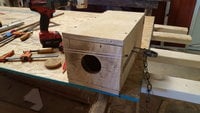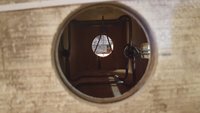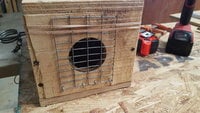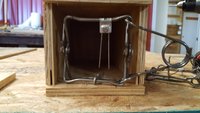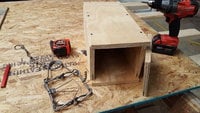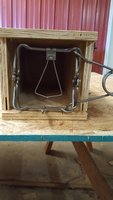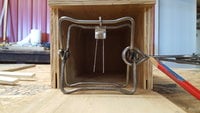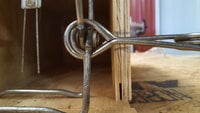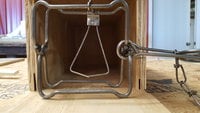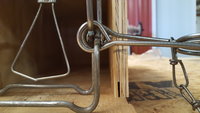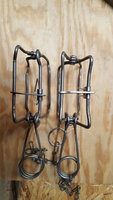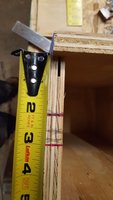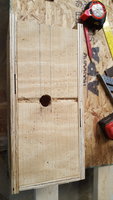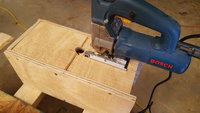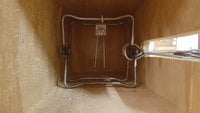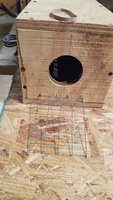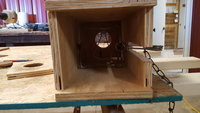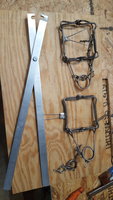Posted this in another thread, but thought it might have merit to discuss on it's own.
For you rat trappers, this is something you might try.....and further modify it by hanging a mini snicker's bar from a piece of string from the center of the lid so rat has to go to the edge of the plank to sniff it. Juuuusssst out of reach.That might keep you from having to constantly keep putting new bait out.
Amazing to me how many youtube channels there are devoted to trapping rats and mice.
Most promising seem to be these simple "walk the plank" types and the rollers. Both seem to benefit from using a tunnel to get them off the bucket/barrel rim so they can't reach in. Rats and mice seem to like the seclusion and security of tunnels so will readily enter it.
Watch enough snap trap videos and all seem to have a problem in that the traps are too small for the rats. A bigger rat can reach a long way with his nose without hitting the trigger, or even if he does, when the snap bar comes down, his head and neck are not fully within the trap, so these traps miss a lot. Use of video cameras to record what happens is quit revealing. The modifications some use to improve on this are bizarre.
And watch enough videos of rat traps, rat killings with dogs, etc. and you quickly realize the futility of nabbing a few of them at a time if you are dealing with a massive infestation. I found out the same thing years ago when I tried to shoot flocks of starlings. I could get 20 a day, which seemed like a lot, until I realized the roost they were coming from held several hundred thousand of them.
Rat poison is about the only thing that is ever going to thin the herd enough to matter. But if poison isn't an option for you, then traps it is.
PS: If drowning rats isn't your thing, then put an ad on Craigslist for live rats. Perhaps some snake charmer in your area will buy them from you to feed the snakes? Turn them into a profit center!!!!
For you rat trappers, this is something you might try.....and further modify it by hanging a mini snicker's bar from a piece of string from the center of the lid so rat has to go to the edge of the plank to sniff it. Juuuusssst out of reach.That might keep you from having to constantly keep putting new bait out.
Amazing to me how many youtube channels there are devoted to trapping rats and mice.
Most promising seem to be these simple "walk the plank" types and the rollers. Both seem to benefit from using a tunnel to get them off the bucket/barrel rim so they can't reach in. Rats and mice seem to like the seclusion and security of tunnels so will readily enter it.
Watch enough snap trap videos and all seem to have a problem in that the traps are too small for the rats. A bigger rat can reach a long way with his nose without hitting the trigger, or even if he does, when the snap bar comes down, his head and neck are not fully within the trap, so these traps miss a lot. Use of video cameras to record what happens is quit revealing. The modifications some use to improve on this are bizarre.
And watch enough videos of rat traps, rat killings with dogs, etc. and you quickly realize the futility of nabbing a few of them at a time if you are dealing with a massive infestation. I found out the same thing years ago when I tried to shoot flocks of starlings. I could get 20 a day, which seemed like a lot, until I realized the roost they were coming from held several hundred thousand of them.
Rat poison is about the only thing that is ever going to thin the herd enough to matter. But if poison isn't an option for you, then traps it is.
PS: If drowning rats isn't your thing, then put an ad on Craigslist for live rats. Perhaps some snake charmer in your area will buy them from you to feed the snakes? Turn them into a profit center!!!!
Last edited:



